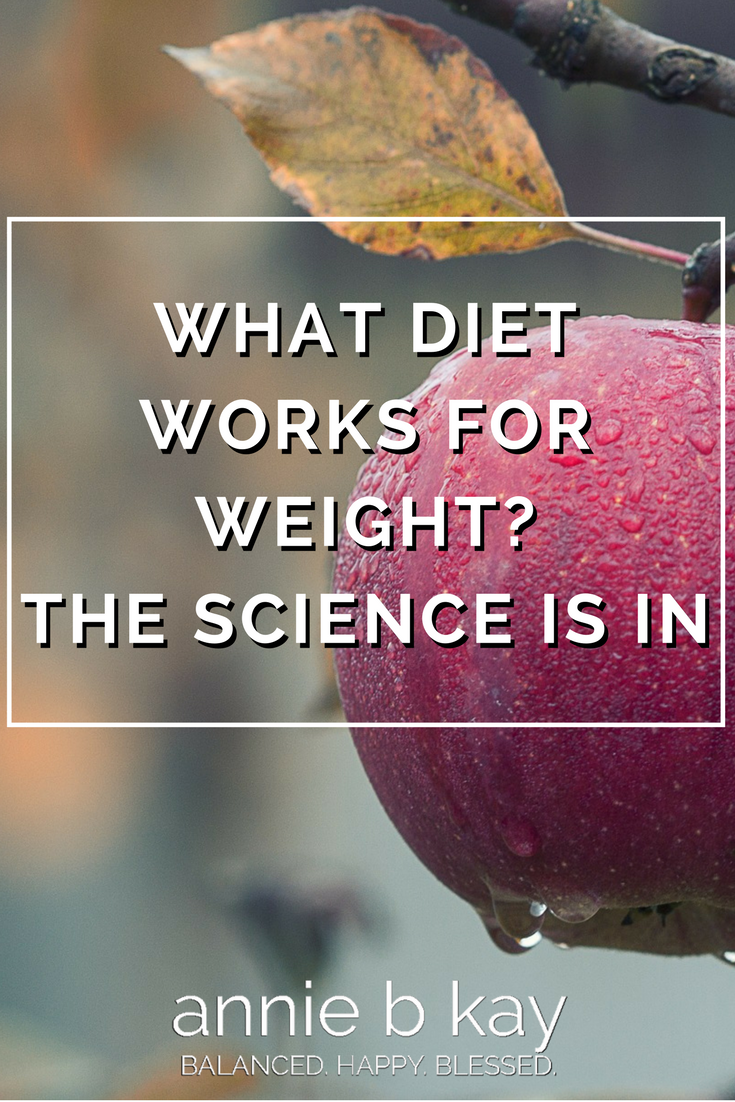
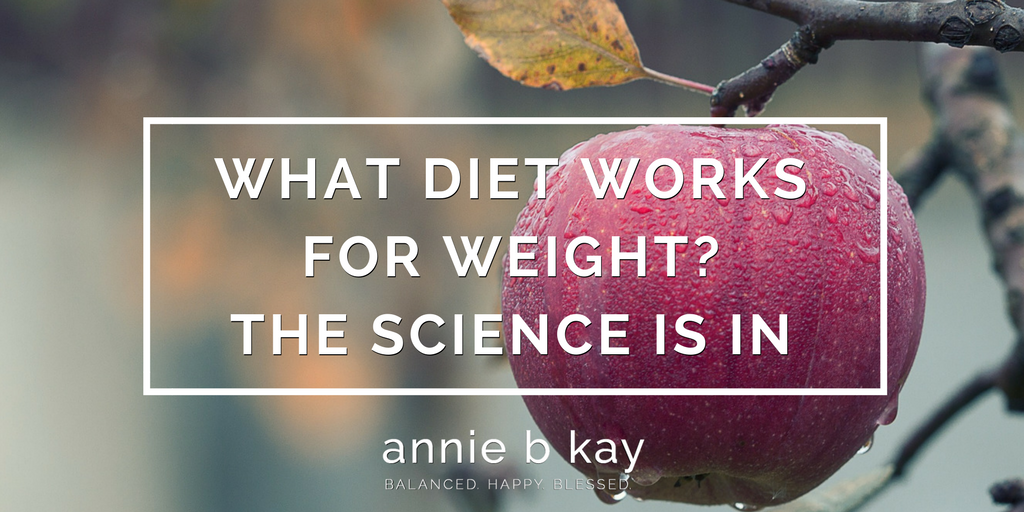
The science is in – it’s the diet you stick with, and the one that honors energy balance.
I’m reviewing the evidence on weight and yoga for the 3rd edition of my CE program, and I came across this info from the NIH Obesity Review Panel…interesting.
A variety of dietary approaches can produce weight loss. It’s all about which one you follow over time while not overeating. Do you like meat? Zone and the like works. Rather focus on plant-based proteins? Absolutely. Whatever path you choose to a healthy weight (I personally lean toward Mediterranean – people can stick with it, it’s nutrient-dense, and it’s a delicious way to eat) you’re going to have to come to terms with reducing your – I’ve gotta say it – calories.
That’s where tools like
mindfulness and meditation come in – they can help us to find our way to change a little more easily. These practices help us disconnect from the immediate urge to inhale delicious foods when our body doesn’t really need them, and to relax, pause, and make a more skillful choice. Really. It can happen. It’s a practice for sure, but it can happen.
The panel found that the following dietary approaches (listed in alphabetical order below) are associated with weight loss when a reduced dietary energy intake is achieved:
- A diet from the European Association for the Study of Diabetes (EASD) guidelines, which focuses on targeting food groups rather than formal, prescribed energy restriction while still achieving an energy deficit;
- Higher protein diet (25 percent of total calories from protein, 30 percent of total calories from fat, 45 percent of total calories from carbohydrate) with provision of foods that realized energy deficit;
- Higher protein Zone®-type diet (5 meals/day, each with 40 percent of total calories from carbohydrate, 30 percent of total calories from protein, 30 percent of total calories from fat) without a formal prescribed energy restriction diet but with realized energy deficit;
- Lacto-ovo vegetarian-style diet with prescribed energy restriction
- Low-calorie diet with prescribed energy restriction;
- Low-carbohydrate diet (initially less than 20 g/day carbohydrate) without formal prescribed energy restriction but with a realized energy deficit;
- Low-fat, vegan-style diet (10 to 25 percent of total calories from fat) without prescribed energy restriction but with realized energy deficit;
- Low-fat diet (20 percent of total calories from fat) without formal prescribed energy restriction but with realized energy deficit;
- Low-glycemic load diet either with formal prescribed energy restriction or without formal prescribed energy restriction but with realized energy deficit;
- Lower fat (≤30 percent fat), high-dairy (4 servings/day) diets with or without increased fiber and/or low-glycemic index/load foods (low-glycemic load) with prescribed energy restriction;
- Macronutrient-targeted diets (15 percent or 25 percent of total calories from protein; 20 percent or 40 percent of total calories from fat; 35 percent, 45 percent, 55 percent, or 65 percent of total calories from carbohydrate) with prescribed energy restriction;
- Mediterranean-style diet with prescribed energy restriction;
- Moderate-protein diet (12 percent of total calories from protein, 58 percent of total calories from carbohydrate, 30 percent of total calories from fat) with provision of foods that realized energy deficit;
- Diet of high-glycemic load or low-glycemic load meals with prescribed energy restriction; and
- The AHA Step 1 diet (with prescribed energy restriction of 1,500 to 1,800 kcal/day, <30 percent of total calories from fat, <10 percent of total calories from saturated fat). Strength of evidence: High
All these different approaches to weight management can work, if you pay attention energy balance. Everyone is different – something different works for each of us. I would say if you are looking of shift your diet and find a healthier weight, ponder the above list. What feels most satisfying to you?
Combine the approach above that is most satisfying with the emotional work of yoga & mindfulness and poof! That’s how we do it. We learn to eat a bit less, enjoy a bit more, and move, and manage stress.
When someone says theirs is the only way to weight loss, they are wrong. There are many paths to healthy weight. If you’re having trouble finding yours, stay connected with this blog and my work. I have lots of tools, resources and support to help you find your way.
You might work individually with me.
You might attend a workshop.
If you haven’t signed up for my newsletter yet, that’s a great place to start.
Be well and enjoy the holiday season.
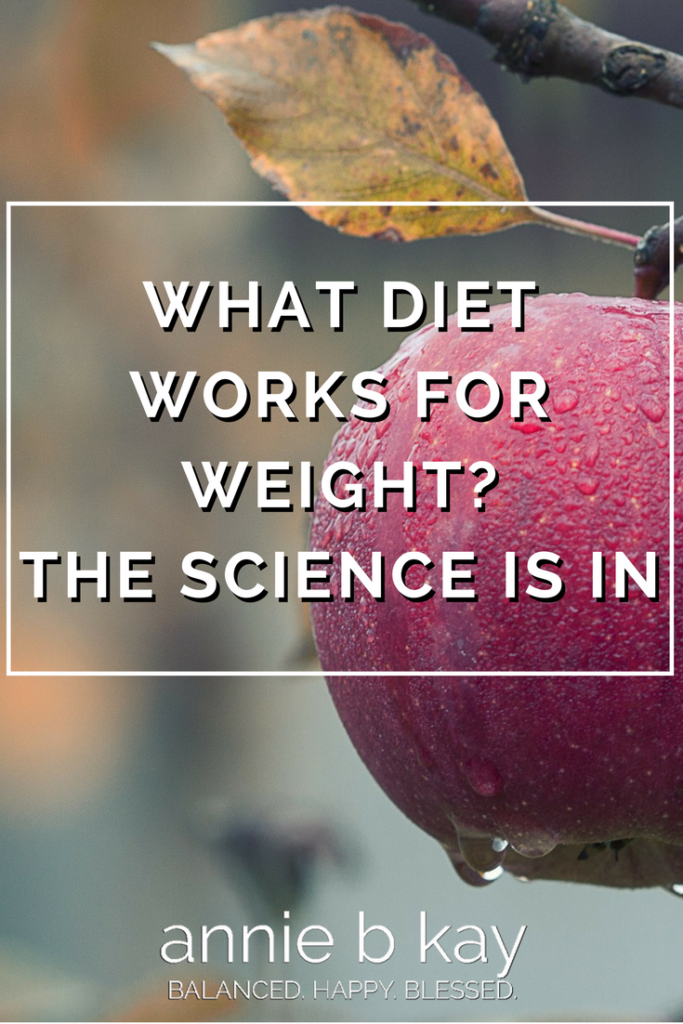
Pinterest
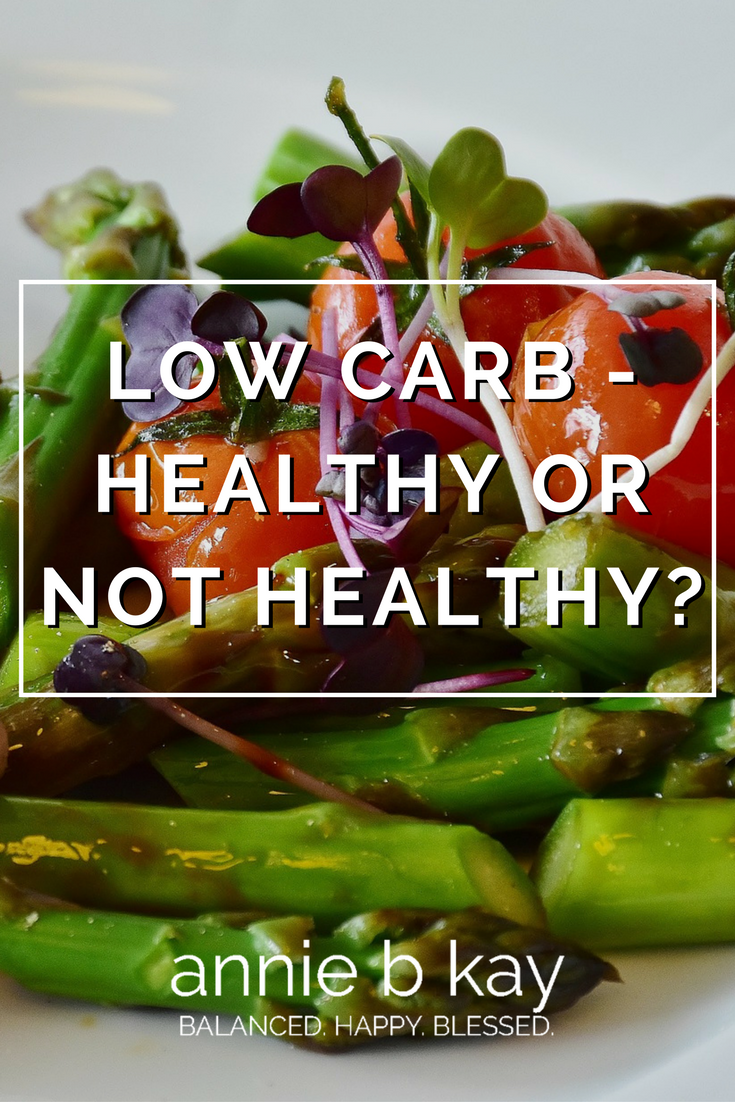
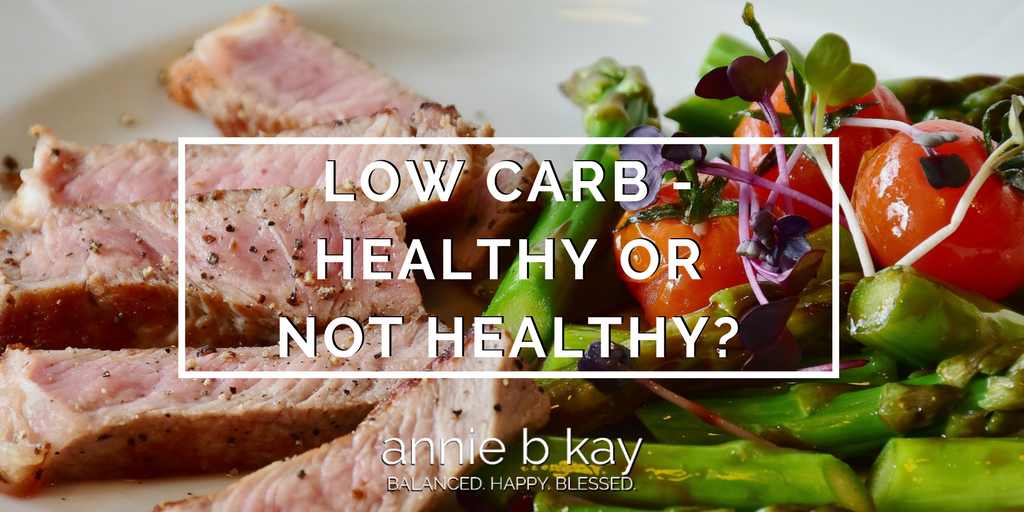
Bread. Chewy crusty bread dipped in a fantastic olive oil and a bit of sea salt. Nutritional friend or foe?
Giving up bread, potatoes, pasta, and even beans because they are carbohydrate-rich foods is a decades-old strategy that’s been presented in a wide variety of popular diets, including Atkins, South-Beach, Paleo, UltraMetabolism, and now Bright-Line.
Just what is a low-carb diet, is it healthy for all, for some or no one?
If you ask 10 people just what a low-carb diet is, you’ll get 10 different answers. That’s because the real clinical data on just what a low-carbohydrate diet is and if, how and who it helps is cloudier than you’d imagine if you believe what you read in the popular press. So, let’s begin with what a low-carbohydrate diet is and is not.
Carb Basics
Carbohydrates break down into sugars and are the energy currency of the body. We need sugar (glucose) for brain function and energy. Most glucose (what the sugar carb breaks down to and the fuel for the body) comes from carbohydrate-containing foods, but the body can also convert protein and fat into glucose (inefficiently and with side effects).
The National Institutes of Health (NIH) set a recommendation of 130 g/day of carbohydrate, based on the amount of glucose needed by the brain and body. The Institute of Medicine (IOM) recommends that 45-65% of daily calories come from carbohydrate. The IOM also set a fiber intake recommendation of 25 g/day for women, and 38 g/day for men.
For comparison’s sake, one serving of carbohydrate (a small slice of bread, or half a banana) contains about 15 g of carbohydrate. If the bread is white bread, it will not have much fiber nor vitamins and minerals unless they are added in the process of fortification. The half banana has about 3 1/2 g of fiber and is a good source of vitamins B-6 and C, potassium and other minerals. So, the banana is what a nutritionist would call more nutrient-dense – that is, calorie for calorie, it gives you lots of nutrients – it’s a higher quality carbohydrate than the bread.
To understand why we’re so low-carb crazy, let’s look at the Standard American Diet (yes, SAD). American men are eating about 287 g of carb per day, and women about 177 g. One-quarter of this carbohydrate intake is from added sweeteners (sugar). Added sweeteners have no nutritive value – not one vitamin or mineral, yet are packed with energy (calories) and absorb very quickly from the gut into the blood stream. How rapidly sugar is absorbed is one of the problems with a highly refined diet high in processed foods (which often acts like just more sugar) and sweeteners – they make you hungry for more. Fiber (which slow the rate that sugar is absorbed from the gut into the blood stream) intakes are about 17 g for men, and 13 g for women. Please note that these intake numbers are changing and not in a more hopeful and healthy direction. Get the picture?
American are eating plenty of carbohydrates, and the type of carbohydrate we are eating is high in sugar and low in fiber. Really low quality, low-nutrition food and lots of it.
A Low-Carb Diet is…
More than the switch from flour and processed grains to whole grains. It’s more than giving up sugar.
A low-carb diet dips below that 130 g/day recommendation of carbohydrates. The most restrictive phase of the Atkin’s diet has 20 gm of carbs in it. When you head down to this level of carbs you are getting your energy from fat and protein. This puts you into ketosis, which is the creation of ketones. While not dangerous in the short term if you drink plenty of water to help your kidney’s flush the ketones out of your body, a common side effect is nasty (nail polish) breath and sweat. It makes you smell, but you’re losing weight and not hungry. My opinion is that over time, this is a very hard diet on your body, and there’s no good data that shows over time people lose more and are healthier from this strategy than others.
So, what do you give up to follow a low-carb diet?
Bread, flour, all grains, even whole grains 🙁 , all fruit :(, starchy vegetables 🙁 like sweet potatoes, corn, peas and squash, beans :(, usually alcohol and of course sugars and sweeteners.
What do you eat?
Lots of meat, fish. Lots of fat. Non-starchy vegetables (which I find many people forget). Usually nuts and nut butters. There are a slew of processed low-carb foods of questionable quality.
Ketosis is different from diabetic ketoacidosis which is a much more dangerous condition of too little insulin and resultant high blood sugar.
Does it work?
Like any highly restrictive elimination diet, low-carb will work because you are eating less. It’s energy-balance basics. What’s handy about low-carb diets is that when you increase your protein and fat intake, you are less hungry than if you ate carbohydrates. So, as a jump-starter to healthier eating and a means of feeling the promise of a lighter body, they can be helpful.
Over the long-term, though, this pattern suffers from what all weight-loss diet patterns suffer from – they are hard to stick with over the long-term and ultimately people struggle to maintain them. There are some additional concerns about this pattern, too. I’ve listed them below.
What the Low-Carb Proponents Forget to Mention
- Your body adjusts to low carb and burning fat as fuel. When you eat a carb again you can become a super-efficient fat-producing machine. So, only do this if you are going to maintain it for the duration.
- A risk for constipation increases – drink lots of water. Your poor kidneys are working triple-time. If you do low-carb, you’ve got to eat your non-starch vegetables, which is a source of fiber that will help prevent constipation. Drink drink drink water.
- Low-carb diets tend to be extra high in saturated fat. While a bit of saturated fat, particularly if it comes from healthful sources like grass-fed organic dairy or grass-fed meats, can be fine, even healthful. When you are eating large amounts of poorer-quality saturated fats, however, the literature still says (despite what you’ve been told of late) you are increasing your risk of heart disease. Sorry. We really don’t know the long-term effects of managing your weight with this strategy. Regular mass-produced bacon, red meat, cream cheese, and butter in limitless qualities is just not healthy.
- Because the glucose you get from carbohydrates is the brain’s (and body’s) preferred fuel source, many following this diet complain of low energy and foggy thinking.
- Most of the quick weight you lose is from water – not fat.
- When you eliminate whole categories of foods, you increase your risk for inadequate nutrition – and low-carb is usually low in a host of vitamins minerals, antioxidants, and fiber. I see this over and over again. Over time, you increase your risk for disease and undermine the smooth functioning of your body.
The Bottom Line?
If you have issues with blood sugar like pre-diabetes, or diabetes, low-carb can be a great strategy to get your blood sugars under control. I’ve seen it work quite a bit. If you know you are over-doing sugar and want a short-cut to moderating, a few days (I find 5 does the trick) of low-carb tends to reduce your cravings. Work with a qualified nutritionist to ensure your diet is rich in nutrients while you do this.
For most of us, let your carb-savvy diet be minimal in refined sugar and refined carbohydrates (cereals, breads, and sweets like cookies and cakes). We all live with or around families and friends, and if your family is anything like mine, cake is part of social events. Have a bite, or a slice and enjoy it. Then get back to your regular practice of whole-food plant-based eating.
The diet that has the most evidence for long-term health is a whole-foods, plant-based diet.
Enjoy nutrient-dense high-quality whole carbohydrates you tolerate like whole grains, whole fruit, vegetables including beans, sweet and white potatoes and other starchy vegetables. If you struggle with weight, have these higher carbohydrate foods with a meal that balances whole food carbohydrates, protein, and fat. A bit of each. The Oldways Ancestral plates do a good job.
We each have a balance of eating, managing stress (which I think is a major cause of weight gain today, in addition to poor-quality food), being physically active in ways you enjoy, and self-acceptance that works. If you struggle with weight, only do the lifestyle changes that you continue forever more. That add to your life rather than restrict. Over time, you will build a healthy and flexible lifestyle.
If you love bread (like I love bread), and are thinking about managing weight, have a little – just not every day at every meal. I think of bread like I think of dessert – it’s a special treat, not an everyday part of my diet.
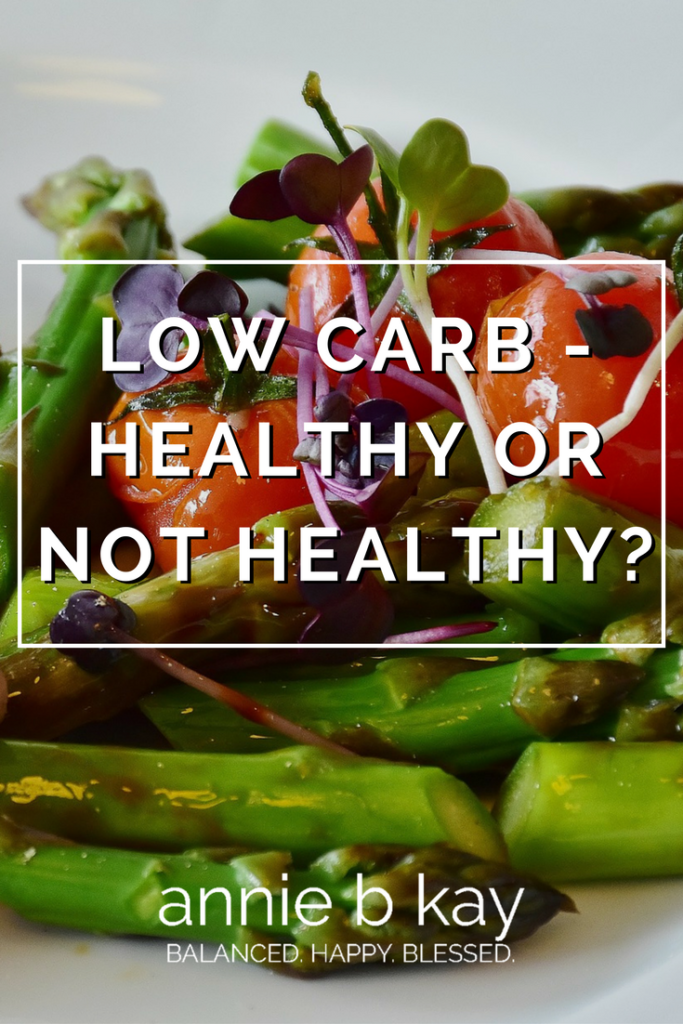
Pinterest
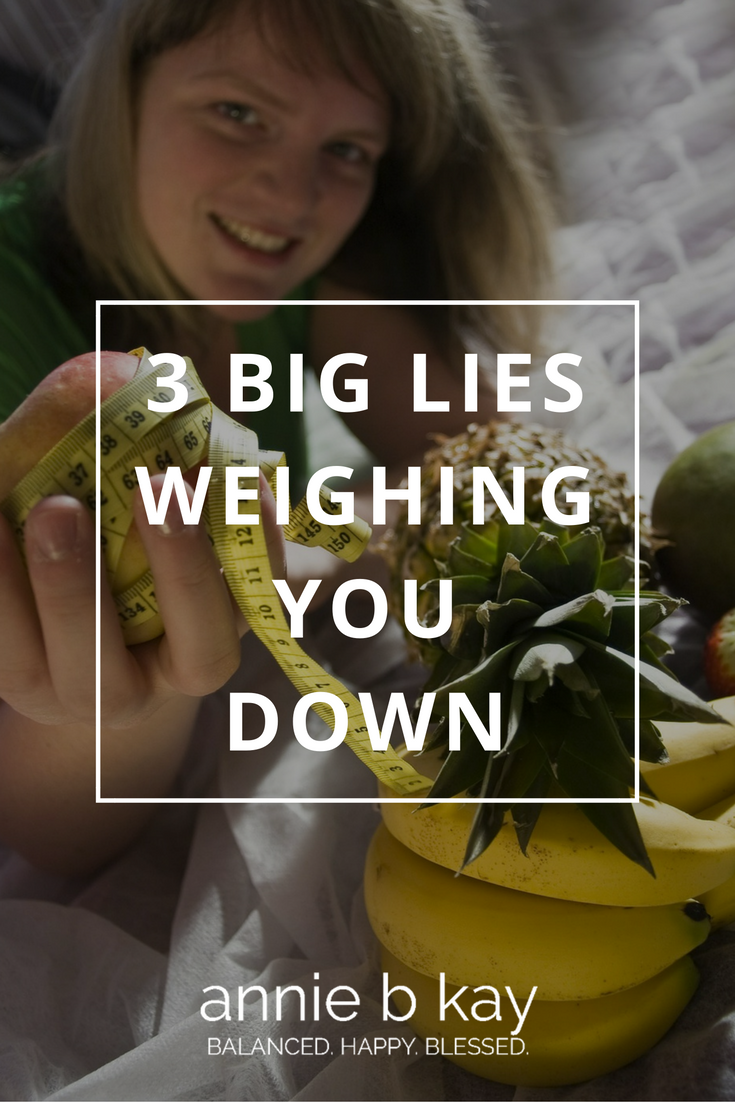
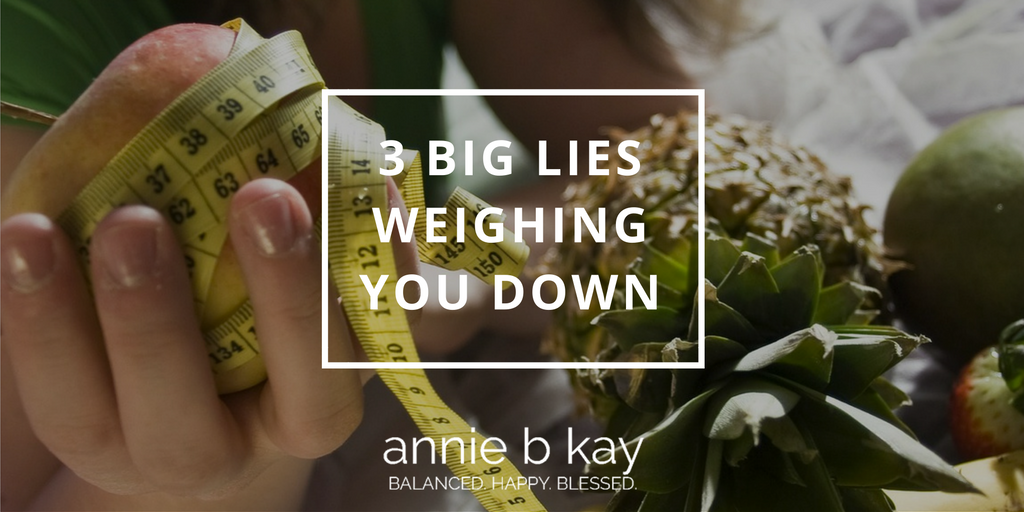
There are more than 3 lies being fed to those trying to follow healthy lifestyles that lead to natural healthy weight, but these three are an excellent place to start. These 3 lies point to the truth of feeling better, being healthier, and authentically expressing and doing what you are here to express and do.
Did you know that size does not necessarily correlate with health? In over twenty years of clinical nutrition practice, I have seen many people – women and men, who are technically overweight yet metabolically healthy. Too, I have seen many women and men who are slim yet metabolically imbalanced in mind, body, and spirit. In today’s culture, with a highly refined diet and ever-increasing stress, for many it is harder than ever to lose weight. It’s not impossible, but it just may be aiming at the wrong target.
You and I have a job to do. It’s to stop feeling bad about who we are, and start taking fantastic care of ourselves. It’s to stop believing lies and half-truths designed to make us feel bad and to follow healthy satisfying and balanced eating and physical activity that works to make us the healthiest, happiest version of ourselves that we can be.
Here are 3 big lies that are keeping you heavy, and the truth that will point the way to feeling fantastic:
1.If you can’t lose weight there is something wrong with you.
NOT TRUE!
It’s not you. For years I’ve spoken to women who feel responsible for weight gain and feel like failures because they can’t achieve the weight they were in high school. They are successful in all areas of life – big wage earners (despite economic discrimination) who run families, have healthy relationships, and yet in this one area, unsuccessful.
The toxicity in the food supply, years of metabolic dysfunction, an unhelpful mindset, and the resulting stress is the perfect storm to feeling unwell and defeated. The fact of the matter is that what will make you feel better – no matter the number on the scale – are your daily habits and choices, and your mindset.
2. You have to be ever-perfect at a diet for it to work.
NOT (usually) true!
Deprivation diets don’t work. Starvation or fasting diets, even intermittent fasting, which has some merit, has the dirty little secret of lowering your metabolic rate, sometimes by a lot and for a very long time. There may be a variety of advantages to lowering metabolic rate (it may make you live longer), but please go in with eyes open. If eating less is not something you’d be happy doing evermore, save yourself the time and grief – don’t do it.
The truth of the matter is that small changes, that you are able to practice day after day without feeling deprived, is the only way forward. Most people can’t transform overnight, but I have seen lots of folks do great with a step-by-step path. If you feel the energy of transformation, there are ways of taking advantage of it without it setting the stage of yo-yoing your way to nowhere.
3. It’s all about calories.
So NOT true!
Energy balance (calories in as food and drink minus calories out as activity and metabolism) is important but quality (nutrient density, macro-nutrient balance and quality) matters just as much or more. If you have inflammation in your body – if your joints are achy, if you are bloated (swollen, really) you can do ‘all the right things’ for weight management and not get anywhere. Cooling inflammation with thoughtful choices is critical and independent of calories. Beyond that, how you eat matters as much (even more) than that. Taking your time to chew your food (can you slow down to take 10 chews per bite?), and taking a few moments to breathe and enjoy your food with all five senses can go a long way to improving your digestive wellness and your weight.
As a high-schooler, I developed bulimia. It was a seemingly easy (or at least doable) solution to an impossible problem; how to eat all those cheeseburgers and cokes and milkshakes that everyone else was eating and still look as slim as the models in the magazines. I could almost do it. But not quite. I tell that full story in Every Bite Is Divine.
For decades now, I have been thinking and writing about how yoga can help us to be more fully aware of who we are. But there is a shadow underfoot. I’m a 55-year-old post-menopausal woman and I feel fantastic and beautiful. I’m an excellent yoga teacher at the top of my game. I don’t, however, fit the beauty ideal of the yoga world. The media world of yoga is getting awfully slim. Sigh.
But that’s not the whole of the yoga world. There are beautiful women and men of every age, of every size, or every color and creed using the gifts of yoga to feel better, look better, live longer and be the fullest expression of who they are today. If that’s you, look around this space. See if there is something here for you. Come be part of the conversation of how we live and love each day in a balanced, happy expression of our unique and blessed place in the wonder of nature and life.
The best way to participate in the conversation is to sign up for my monthly newsletter. My newsletter takes you deeper into the practice of being fully and happily blessed no matter who you are.
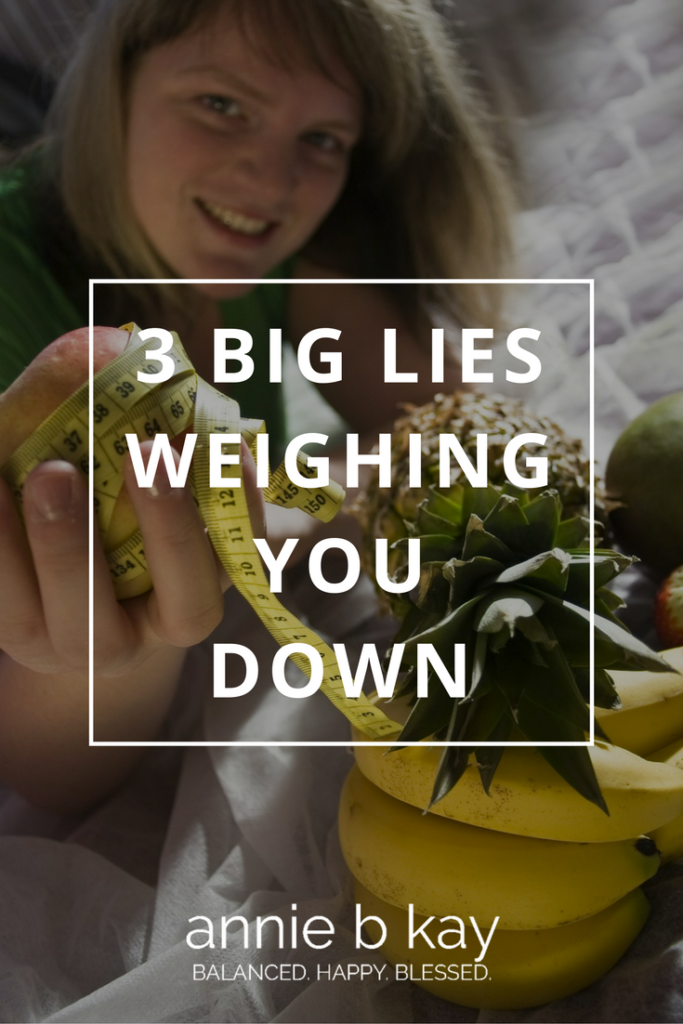
pinterest
Here it is. The holiday season.
Party time, candy and cookie time, rich food time. Estimates for how much Americans gain during this season range from 5 to 15 pounds, depending on who’s doing the reporting. And the particular parties you bless with your presence, I imagine. I wonder if the weight gain phenomenon is more prevalent in New England and the northern climes, but I’d love to hear stories and strategies from those in warmer places as to their situation and strategies for maintaining a healthy weight (and healthy habits) through this time. I imagine every region has it’s own spin on the bacchanal that is the holidays.
Here are few survival tips:
Accept the fact that you won’t be losing weight this month.
Regardless if you are a party momma or a stay-at-homer, there is just more high-calorie food around. Just maintaining is a feat this time of year, so relax on weight goals right now. January will be here soon enough.
Keep on moving. Practice stress management. Tie them together.
Keep physical activity top-of-mind this month, and don’t miss an opportunity to move. Physical activity is great stress management, so if you didn’t get your packages in the mail on time, didn’t get to cards this year, didn’t knit all your friends sweaters or didn’t get invited to the right parties, move a little to release the emotion that sits in your body as a result of life not being perfect.
Focus on the peeps, not the table.
Food traditions this time of year carry deep resonance and a strong pull. For me, it’s my mom’s cookies, and anything resembling eggnog. It’s not always easy to remember that the reason for the season is really love, hope and connectedness. I know that many family relationships can be challenging, and that can drive us to seek comfort from seasonal goodies in unhealthy quantities. There’s a Buddhist practice that may be helpful in working with relationships this season. The Dali Lama describes a practice of bowing down to the difficult people in your life, and thanking them for the opportunity they have provided to help you to experience spiritual growth. Love and honor them! For me, this practice a) cracks me up a little, and b) opens me up to another way to seeing things beyond the way my conditioned judgemental mind does. Somehow, it makes it easier for me to step back and see the people who challenge me differently, and to forgive them for the pain they cause me.
And finally:
Resist and renounce projections as to what it “should be”
As gifted American poet Mary Oliver says, Whoever you are, no matter how lonely or difficult your life is, the world opens itself to you this season. My wish for you is to feel that magic. My wish for you is that someone does the Buddhist practice of loving you when you cause them pain. And I wish you peace.
Namaste
Annie











